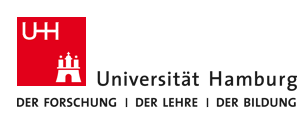Core Research Area T: Three-dimensional topological quantum field theories
Leading Researchers
Topological quantum field theories (TFTs) represent a prominent example of a fruitful interplay between mathematics and physics. Its basic concepts formalize properties one can expect for a quantum field theory defined by some path integral. Using structures from geometry and representation theory, examples can be constructed in a mathematically rigorous way. This stimulated new areas of mathematics, but also lead to unexpected interactions between traditional areas, in particular between algebra and topology.
The research topics in CRA T can be organised into three areas:
- Topological defects in 3d TFTs: classification and applications,
- Non-semisimple generalizations of 3d TFTs,
- Non-compact generalizations of 3d TFTs.
2. The best-understood 3d TFTs are those arising via the Reshetikhin-Turaev or via the Turaev-Viro construction. Both start from a finitely semisimple monoidal category with appropriate extra data. In trying to obtain new types of 3d TFTs (as 3-2 or extended 3-2-1 theories) one can attempt to weaken these requirements by dropping semisimplicity or by dropping finiteness (point 3). In both cases, a qualitatively new feature as compared to the finitely simisimple case is the appearance of continuous parameters in the description of representations. On the side of 2d CFT, non-semisimplicity amounts to studying logarithmic CFTs. Progress in understanding the relevant representation categories, and in combining chiral into full CFTs in a model-independent way has been made in [R][FSS]. Possible research projects are to obtain more examples of non-semisimple braided tensor categories from simple chiral logarithmic CFTs and to study the resulting link invariants via [L][CGPM], and to extend the study of correlation functions in logarithmic CFTs in [FSS] to include boundaries and defects.
3. Further interesting examples of 3d TFTs arise from Chern-Simons theories having a non-compact gauge group like SL(2,C) or SL(2,R). The quantum Teichmüller theory can be interpreted as a sector of the quantum theory resulting from the canonical quantization of the Chern-Simons theory with non-compact gauge group SL(2,R). Very recently there has been progress towards the rigorous construction of quantum Chern-Simons theory with gauge group SL(2,C) [AK][D]. The associated three-manifold invariants generalize the Reshetikhin-Turaev invariants considerably, depending on a continuous and a discrete parameter. Two directions of future research in this area appear to be particularly promising: It should, on the one hand, be very interesting to identify the non-rational CFT appearing in noncompact generalizations of the relations between Chern-Simons theory and CFT discovered by Witten [W1]. So far, the only known example is provided by the relation between the quantum Teichmüller theory and Liouville theory [TV]. Studying limits of the new invariants defined by the non-compact Chern-Simons theories should, on the other hand, help us to understand the relations to known invariants as interesting and subtle as the hyperbolic volume of knot complements.
References
[AK]
J. Andersen and R. Kashaev,
Complex Quantum Chern-Simons,
arXiv:1409.1208.
[CGPM]
F. Costantino, N. Geer and B. Patureau-Mirand,
Quantum invariants of 3-manifolds via link surgery presentations and non-semi-simple categories,
J. Topology 7 (2014) 1005–1053.
[CR]
N. Carqueville and I. Runkel,
Orbifold completion of defect bicategories,
arXiv:1210.6363.
[D]
T. Dimofte,
omplex Chern-Simons theory at level k via the 3d-3d
correspondence,
arXiv:1409.0857.
[FFRS1]
J. Fröhlich, J. Fuchs, I. Runkel and C. Schweigert,
Duality and defects in rational conformal field theory,
Nucl. Phys. B 763 (2007) 354–430.
[FFRS2]
J. Fröhlich, J. Fuchs, I. Runkel and C. Schweigert,
Defect lines, dualities, and generalised orbifolds,
Proceedings of the XVI International Congress on Mathematical Physics, Prague, 2009.
arXiv:0909.5013.
[FSS]
J. Fuchs, C. Schweigert and C. Stigner,
From non-semisimple Hopf algebras to correlation functions for logarithmic CFT,
J. Phys. A 46 (2013) 494008.
[FSV1]
J. Fuchs, C. Schweigert and A. Valentino,
Bicategories for boundary conditions and for surface defects in 3-d TFT,
Commun. Math. Phys. 331 (2013) 543.
[FSV2]
J. Fuchs, C. Schweigert and A. Valentino,
A geometric approach to boundaries and surface defects in Dijkgraaf-Witten theories,
Commun. Math. Phys. 332 (2014) 981–1015.
[L]
V. V. Lyubashenko,
Invariants of three manifolds and projective representations of mapping class groups via quantum groups at roots of unity,
Commun. Math. Phys. 172 (1995) 467–516
[R]
I. Runkel,
A braided monoidal category for free super-bosons,
J. Math. Phys. 55 (2014) 041702.
[RT] N. Reshetikhin and V. G. Turaev. Invariants of 3-manifolds via link polynomials and quantum groups, Invent. Math. 103 (1991) 547–597.
[TV]
J. Teschner and G. Vartanov,
Supersymmetric gauge theories, quantization of Mflat, and
conformal field theory,
arXiv:1302.3778.
[W] E. Witten. Quantum field theory and the Jones polynomial, Commun. Math. Phys. 121 (1989) 351–399.


